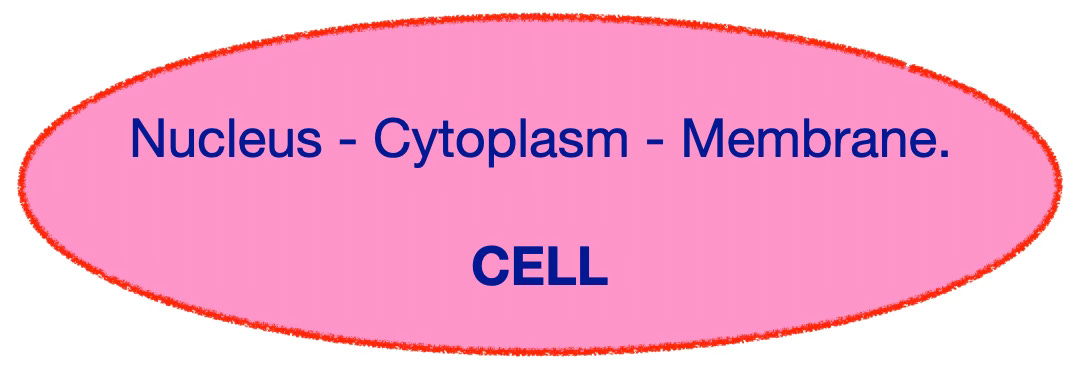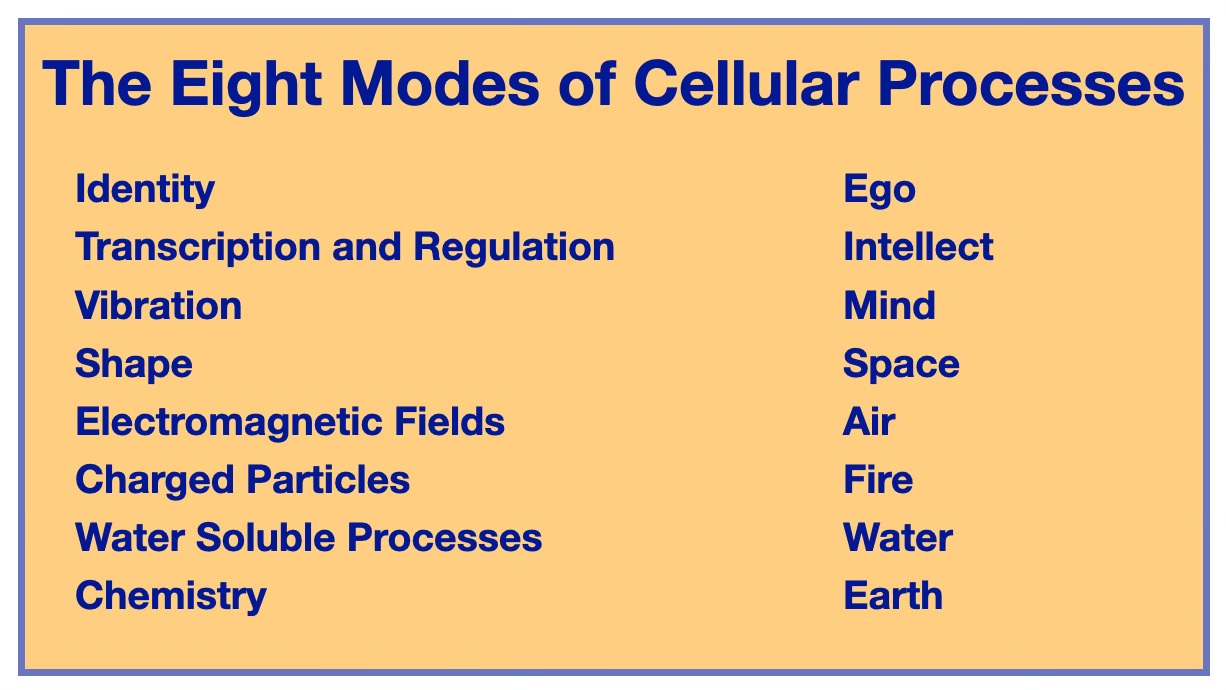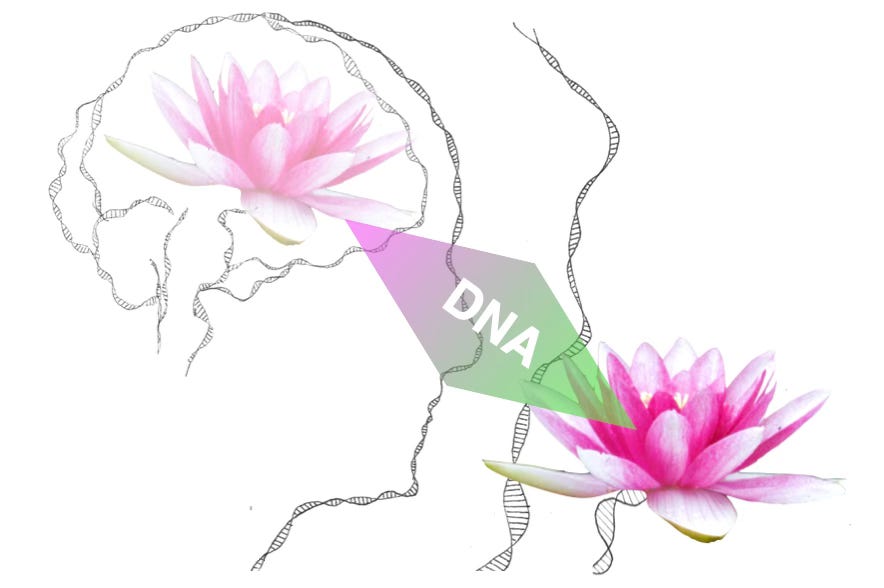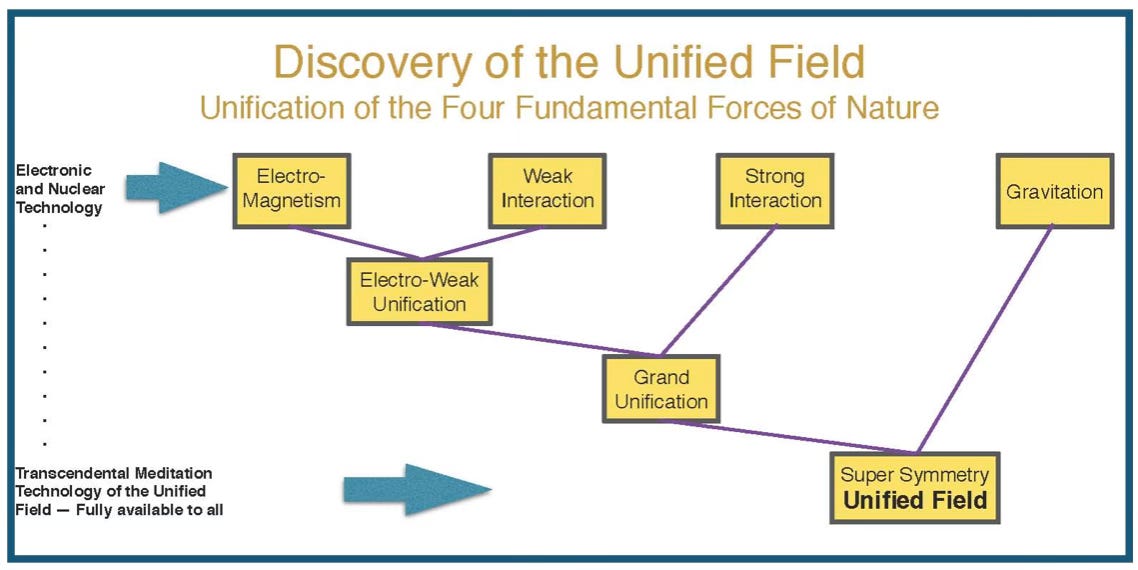The Long Read: Twenty Reasons to Completely Reject Biotechnology Experimentation Part 1
Gene editing technology is being promoted as a giant medical breakthrough but is it actually unfolding a catastrophe? We explore the dangers. In Part 2 we will ask ‘what are the alternatives?’
Speaking in 2017, Tal Zak , the Chief Medical Officer of Moderna laid out the dream of biotechnology:
“We think of DNA like an operating system….we are hacking the software of life, the genetic code, and that has profound implications for the cure of everything from flu to cancer….We think of biotechnology as information therapy.”
In complete contrast, Our World in Data has reported in excess of 30 million excess deaths globally since January 1st 2020—the period when Moderna, Pfizer, AstraZeneca and others orchestrated the biotechnology response to a disease likely created through biotechnology experimentation.
Have Tal Zak and other pioneers of gene technology got it all wrong? Have we misunderstood far more about life than we have understood? Is our current paradigm of genetic modification and gene therapy incomplete? An increasing number of scientists are questioning the validity of the Covid response, but few are facing reality and questioning the safety of biotechnology in general. We explore twenty reasons to doubt the biotechnology vision of life that has become the common coin of medical and agricultural research, development, public and private and funding, as well as public education about the supposed benefits of gene technology.
1. Life begins with a whole cell, DNA does not act alone
Rather than a naked molecule of DNA, all life begins with a cell which has a three in one structure including DNA in the nucleus
Which mirrors the 3-in-1 structure of life as we personally experience it
2. The Complexity Biotech Ignores or Oversimplifies
A human cell contains around 2 trillion molecules whose actions are all coordinated together around the nuclear DNA to form the true building block of life. The complexity is only very partially understood. Editing DNA has ramifications for cellular functions that go far beyond our current understanding.
The explanations of biotechnology interventions being offered to the general public, such as vague and misleading diagrams like the one below purporting to outline the action of mRNA vaccines, are huge over simplifications which omit the multidimensional nature of cellular components each of which perform many functions which can be degraded when any individual element is edited.
3—10. The Eight Modes of Cellular Processes
The processes which transfer information within the cell from the nucleus to the membrane and into wider physiology are complex and multidimensional. They roughly correspond to classical ideas about the mind and body. We will consider these one by one from a modern scientific perspective.
3. The Paradox of Identity—DNA facilitates a ‘part and whole’ system.
Life develops sequentially from a single cell, but miraculously we retain a single identity. No one in biotechnology understands how this happens.
Our immune system is designed to defend the uniformity of DNA in our 37 trillion cells. Organ transplant recipients have to take immunosuppressant drugs for the rest of their lives. A paper in the journal Transplantology is entitled “Personality Changes Associated with Organ Transplants”. It documents the experiences of individuals who received a range of donated organs including hearts, kidneys, liver, and lungs.
It is well known that heart transplant recipients can experience consequent personality changes. Notably, this study shows that the same is true following other types of organ transplants. Here is a summary of the range of changes observed in the 47 study subjects broken down by heart transplant patients versus other organ recipients.
The implication is clear, editing of human DNA can result in unexpected and unwanted distortions of human identity.
4. Transcription and Regulation—The command and execution system of DNA via RNA
DNA expresses itself through RNA. In this way trillions of essential tasks and repairs are carried out everyday in every cell. Deliberately introducing genetic edits amounts to bypassing essential immune protections and homeostatic mechanisms whose functions are not fully understood. A 2012 article in Nature entitled “Landscape of transcription in human cells” reported:
“A complete catalogue of the functions and processing fates of RNAs is not yet available and their characteristic subcellular localizations are also poorly understood”
5. Vibrational Modes
A paper in the Journal of Cellular Signalling published in 2020 reports the role of molecular vibration in cellular systems. This is based in part on emission and resonance of electromagnetic patterns in the infrared frequency range generated by the vibrations of molecules. Resonant frequencies of molecular vibration are known to be particularly sensitive to precise atomic structure and can therefore be disrupted through editing of genetic and epigenetic molecular structure and functions.
6. Molecular Shape
A 2008 paper entitled “The importance of discerning shape in molecular pharmacology” reports that molecular shape helps determine interactions with cellular receptors, ion channels, enzymes, transporters and an array of other complex processes. Genetic modification can alter biomolecular folding and shape in unpredictable ways. A 2019 paper in the International Journal of Molecular Sciences warns “If a [genetic] mutation causes significant perturbation by either folding or binding free energies, it is quite likely to be deleterious”
7. Electromagnetic Fields
Genes work in tandem with Electromagnetic Fields (EMFs) to ensure developmental stages follow a morphological pattern. Here is a photo of two-headed worms created by applying external electric fields during the developmental stage of the organism.
There are two potential dangers here. Firstly external EMFs such as those generated by cell phones and other electronic devices and technologies can disrupt healthy biological development causing for example DNA strand breaks in normal cells. Conversely genetic editing may result in faulty expression of intra-cellular EMF fields, an area that has not been researched and remains an unquantified risk factor.
8. Electric Signals
Electrical signals are conveyed along the cell membrane and are often converted into chemical signals conveyed by small messenger molecules called neurotransmitters. In general the translation of genetic expression into electric signals is not well understood which indicates another intra- and inter-cellular information pathway that is vulnerable to genetic and epigenetic editing procedures.
9. Water Soluble Processes
Liquid water constitutes about half the volume of every living biological cell. A 2017 article in Chemical Reviews reports
“Water can act as a solvent, reactant, product, catalyst, chaperone, messenger, and controller. Interactions with water are a major driving force for biomolecular structure and function in living systems. They are dominant forces in the folding of proteins and nucleic acids, the partitioning of solutes across membranes, and the binding of metabolites and drugs to biomolecules. Specific water molecules often play critical roles in biological mechanisms.”
It concludes that our current computational classical and quantum models of water are inadequate to understand the cellular characteristics of healthy life and disease formation. The lack of such understanding highlights a risk factor inherent in genetic modification.
10. Chemistry
Cells constantly receive and send chemical signals and extract energy from the chemistry of food. These mechanisms are put at risk by genetic modification in two ways. Firstly the capacity of our genetics to orchestrate the assimilation of the chemical energy in food. Secondly studies show that a diet containing fresh fruit and vegetables is highly supportive of health. Whether the genetic modification of food sources could impair the healthy quality of food based on DNA is an unknown quantity.
11. Intelligence
We have little or no idea how our awareness is supported by our genes. The defining characteristic of biological entities is their awareness. Living organisms are awake, they register perceptions, make decisions and respond intelligently to their environment. A 2001 paper published in Dialogues in Clinical Neuroscience entitled “Genetic basis of cognitive disability” concluded:
“The molecular pathology of cognitive disability is turning out to be as mixed up as the condition itself, with unexpected complexities even in apparently simple gene-deletion syndromes.”
The idea that an understanding of the risks of biotechnology can be constructed without understanding or including consciousness is absurd. The exclusion of consciousness from science, the reductionist viewpoint and the basis of the now defunct theory of behaviourism, is essentially a luddite viewpoint discredited by experimental results.
12: DNA is embedded in physical laws which are in turn embedded in consciousness
The four forces known to physics are connected to a unified field beyond time and space, whose self-interacting properties are characteristic of our consciousness.
Consciousness or the observer plays a central role in physical theory.
Firstly in 1905, Einstein’s seminal paper on Special Relativity revealed that the speed of light is the same for all observers. Einstein highlighted the special relationship between the observer and with the physical world of space-time.
Secondly, the emergence of quantum mechanics revealed that measurement and hence the observer plays a key role in the evolution of physical states which can even extend to backwards causation in time.
Thirdly, quantum mechanical entanglements or memories of relationships between states ensure that new interactions between consciousness and matter can alter the state of distant matter in the universe.
Fourthly, quantum cosmology explains the emergence of the universe itself as the result of the interplay between observer, observed, and observer-observed relationship which can be quantified as information gathering and utilising systems described by the Wheeler-De Witt equation.
Fifthly, theories, which aim to provide a complete unified framework for physical theory such as String Theory, rely on non-abelian mathematics whose self-referral structure is a defining characteristic of consciousness.
Sixth, the laws of physics are symmetric as to the passage of time, yet a unidirectional arrow of time is our common experience. Thus discussion of this arrow of time and the second law of thermodynamics often identifies orderly states with reference to an observer’s preferences.
This sixth entry of consciousness into physics makes the connection between physics and evolutionary theory. Living systems defy the second
law of thermodynamics, increasing in order rather than disorder.
In sum, physics is incomplete without a theory of consciousness.
DNA operates at the junction point between the laws of nature understood by physics and the biological laws governing the physiology
The most sophisticated functions of DNA at the junction point between consciousness and matter support human development and the higher abilities of human consciousness. Exactly how this happens is unknown to biotechnology and therefore the expression of consciousness could be put at risk by genetic modification.
13. Genetic structures are precise rather than random
The theory that genetic structures evolved through random events has given rise to the idea that genes may be edited safely. In fact genetic structures are hugely precise, replacing even a small sequence or even a single codon can overturn their function as a whole and give rise to inherited defects such Huntington’s or sickle cell anaemia. The immune system constantly defends this precision, completing around 70,000 DNA repairs in each cell every 24 hours.
An article by Zachary Blount in American Scientist in 2017 is entitled “Replaying Evolution—Is the living world more a result of happenstance or repeatable processes?” By studying thousands of generations of bacteria and by looking closely at related species of lizards on separate islands, Dr Blount concluded that evolution is both repeatable and contingent on circumstances. This puts the foundational premise of gene editing safety—the idea that evolution is essentially random—at risk. It raises fundamental questions about even the possibility of safe gene editing.
14. DNA is non-linear
Each gene performs many tasks in conjunction with other genes. They don’t operate alone. Editing genes inevitably causes off-target unintended mutagenic effects. Aim to change just one function but you also change the others. Despite publicity touting safety, this is also true of CRISPR editing. A 2003 article in Gene Therapy concluded
“There is a risk of treatment-induced malignancy from retrovirally based gene therapies.…its spectre has always loomed over the field.”
A 2019 article in Frontiers in Oncology entitled “Gene Therapy Leaves a Vicious Cycle” warned:
“…gene therapy has been caught in a vicious cycle for nearly two decades owing to immune response, insertional mutagenesis, viral tropism, off-target activity, unwanted clinical outcomes (ranging from illness to death of participants in clinical trials), and patchy regulations.”
The article struck a hopeful note because of the advent of CRISPR gene editing techniques, however subsequent problems such as the recent liver failures and deaths following Sarepta’s gene therapy treatment for muscular dystrophy have only served to confirm the existence of serious risks.
15. Impossible to Contain
Gene edits, once performed, cannot be recalled, remediated or contained. Laboratory accidents, infections, and organism escapes are far more common than we have been led to believe. Genetic material is highly mobile, and interactive. Under certain circumstances it can integrate into the human genome. A 2021 article in PNAS entitled “Reverse-transcribed SARS-CoV-2 RNA can integrate into the genome of cultured human cells and can be expressed in patient-derived tissues” confirmed the risk.
A 2022 study of the Prevalence of Accident Occurrence Among Scientific Laboratory Workers in Lebanon found:
“Among 220 participants recruited in our study, 99 participants (45.0%) have had accidents during their lab works. 59.6% have been exposed once, 32.3% between two and four times, only 1.0% between four and six times, and 7.1% more than six times.”
A 2015 USA Today Investigation uncovered hundreds of mistakes, reporting:
“Vials of bioterror bacteria have gone missing. Lab mice infected with deadly viruses have escaped, and wild rodents have been found making nests with research waste. Cattle infected in a university's vaccine experiments were repeatedly sent to slaughter and their meat sold for human consumption.”
16. High Rates of Adverse Effects
Rates of adverse events associated with gene editing and therapy dwarf the rates of adverse effects from pharmaceutical medicines and medical interventions which are already unacceptably high. Before the pandemic these were the third leading cause of death. There are physical reasons for this. At the smaller time and distance scales associated with nuclear and intra-cellular processes, fewer and fewer elements control a wider and wider range of effects. Thus multiplying the potential for error over longer periods of time covering the entire range of physiological processes and organ systems extending to whole system collapse.
A 2021 article in Nature is entitled “Gene therapy needs a long-term approach”. It reports:
“Gene-therapy trials are on the rise, but more needs to be done to understand the long-term risks associated with this type of treatment…..[there are] growing concerns about the late adverse effects.”
17. Epigenetic Spillover
Genes function as part of wider cellular, physiological and environmental systems. These systems are fundamental to our genetic command and control system. Alterations to regulatory mechanisms in cells such as those enforced by mRNA vaccination can permanently disrupt key ways genes express themselves. RNA cannot exist without DNA and DNA cannot express itself without RNA. Cells form a whole system with interdependent parts.
Even when fully grown, the physiology is not a static network. Studies have revealed that about 98 percent of all the atoms in a human body are replaced every year. This process of renewal fully relies on the integrity, flexibility, precision and subtlety of genetic processes whose full suite of functions over time and in response to injury or pathogens can be disrupted by genetic modification.
18. Risks to the Wider Ecosystem and Agriculture
Genetic modification is more like introducing rabbits to Australia (which has destroyed valuable pasture land with disastrous long term consequences) than it is like a heart transplant: it creates changes in the vast cellular and physiological ecosystem that will almost always have unpredictable effects unrelated to the intended purpose.
We are beginning to understand that the integrity of the human genome relies upon maintaining the wider epigenetic environment of our food sources among the plants and animals.
19. DNA is Part of a Biofield
The factors affecting our health range from the abstract field of consciousness through the physical fields and matter particles, molecular aggregation of elements, the complex DNA molecule, biochemical messengers, proteins, metabolic macromolecules, cellular components, cells, organs, organ systems, the physiology as a whole, microorganisms, our food, the air we breathe, the near environment including the epigenetic environment, our home, our family, our society, our world, our descendants and even the distant reaches of the universe. We have explored the concept of biofields in our article The Long Read: What is a Human Biofield? which explains that we are more closely linked together than previously recognised.
Biological organisms do not behave as purely mechanical systems which are governed by the second law of thermodynamics—the law of universal decay or entropy, which states that in any closed system disorder will increase over time. The order of biological systems increases rather than decays. In effect, biofields are open systems which consume order from their environment. They do so via their food intake. We are eating order, or in more common parlance intelligence. Whilst mechanical systems decay, biological systems cooperate to evolve. The peculiar ability of systems governed by DNA to flow upstream against the current of decay so to speak, is not properly understood and could be disrupted by genetic modification.
20. Society Involves Genetic Networks
The concept of a biofield owes much to our study of plants and animals. Biofields revolve around individual species who share specific genetic similarities.
Although we tend to describe communications and shared behaviours in terms of psychological and behavioural concepts, biofields are not confined by these. They involve multiple laws of nature, but principally they are genetic fields. The gene/consciousness axis supports an identity which relies on genetic similarity. This points to individual consciousness field formation via the physiology, but it also points to a biofield uniting organisms of the same species. A genetic biofield is the physical counterpart of collective consciousness.
The health of society depends on its members. The health of the individual depends on society. Crime, ill health, economic and geopolitical instability, social unrest, increased conflict, reduced social cohesion, and extreme polarisation of opinion are rising. The vaccination of billions of individuals using mRNA technology may have undermined genetic connections within the human biofields that underpin the stability and integration of society.
Given the inevitability of serious risks from biotechnology experimentation, what are the alternatives to maintain health, happiness and progress? In Part 2 of this article to be published shortly, we will explore the possible remedies and alternatives. This will involve an in depth discussion of the effect of technologies of consciousness.
If you have enjoyed this article please consider switching to a paid subscription we rely entirely on your support and appreciate your interest.















